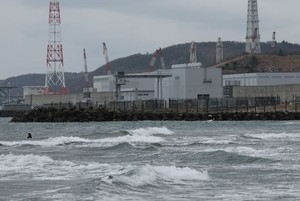By RYUICHI KITANO/ Senior Staff Writer
September 5, 2023 at 19:01 JST
A document released by a Yokohama group shows a much larger number of Koreans were killed by mobs in Kanagawa Prefecture following the 1923 Great Kanto Earthquake than the official count of two.
In addition to a summary of 59 incidents involving the murder of Koreans, the document released on Sept. 4 lists the names of 14 of the 145 who were killed there.
The document, dated Nov. 21, 1923, is believed to be a report submitted by Asakichi Yasukochi, the then Kanagawa prefectural governor, to the director-general of the Home Ministry’s Police Affairs Bureau about what happened to Koreans and Chinese in Kanagawa after the Sept. 1 earthquake.
The document was obtained by a group that has held memorial ceremonies for Koreans killed in the aftermath of the quake.
“The official record of Korean victims is two killed in Kanagawa and none in Yokohama,” Sumiko Yamamoto, 84, head of the group, said at a Sept. 4 news conference at the Diet building. “This document makes clear that even though there was a report about a massacre, the government has chosen not to disclose that fact.”
The document lists the time, date and location of each incident, the crime committed and the address and occupation of the victim.
In the ensuing chaos of the quake that killed more than 105,000 people, unfounded rumors spread that rebellious Koreans in the capital area were poisoning well water and setting fires.
Various reports estimate that between 1,000 and 3,000 Koreans were killed by mobs in Kanagawa. Many eyewitness accounts were recorded of Koreans being murdered.
A report by the prewar Justice Ministry from that time found only two Koreans killed in Kanagawa.
However, one entry in the recently released document states that 42 Korean men who were working at Yokohama Port were killed by a mob on Sept. 2.
The name of a Korean worker at a Kawasaki steel plant who was killed on Sept. 4 matches that found in a newspaper report from that time.
Although the document lists the names and addresses of Japanese people suspected of involvement in the violence, no suspects were found in many of the cases, or the incidents were considered still under investigation.
The document also describes how Koreans and Chinese were taken into custody at local police stations. It lists 14 cases of suspected arson and robbery by Koreans.
Yamamoto explained that Kang Deok-sang, professor emeritus of Korean history at the University of Shiga Prefecture, obtained the document about 10 years ago from a used bookstore. Kang, who researched what happened to Koreans after the Great Kanto Earthquake, died in 2021.
Kang had collected and analyzed documents from the 1950s and worked with Yamamoto in assessing papers gathered from various parts of Kanagawa to compare with eyewitness accounts.
Masataka Tanaka, a professor of modern Korean history at Senshu University who has also researched the massacre of Koreans after the Great Kanto Earthquake, said the document was very important because it contained the names of some of the victims.
“Because Korea was a colony of Japan at that time, the government had a responsibility to look into the deaths of Koreans who were nationals of the state,” Tanaka said. “The government should investigate not only the veracity of the document but also cooperate with the South Korean government to look for bereaved family members of the victims.”




















A peek through the music industry’s curtain at the producers who harnessed social media to help their idols go global.
A series based on diplomatic documents declassified by Japan’s Foreign Ministry
Here is a collection of first-hand accounts by “hibakusha” atomic bomb survivors.
Cooking experts, chefs and others involved in the field of food introduce their special recipes intertwined with their paths in life.
A series about Japanese-Americans and their memories of World War II